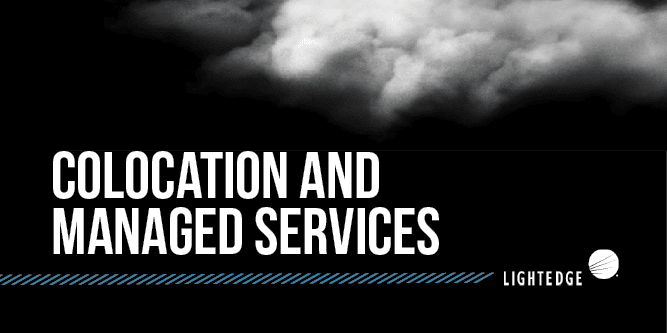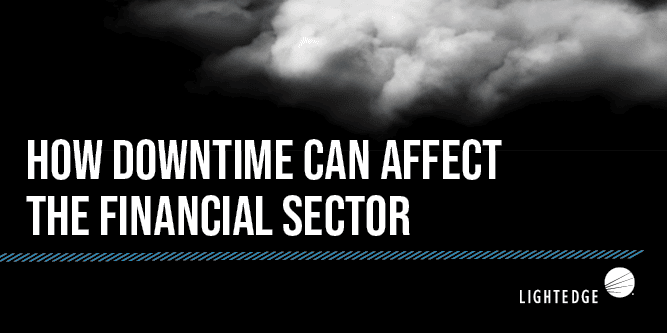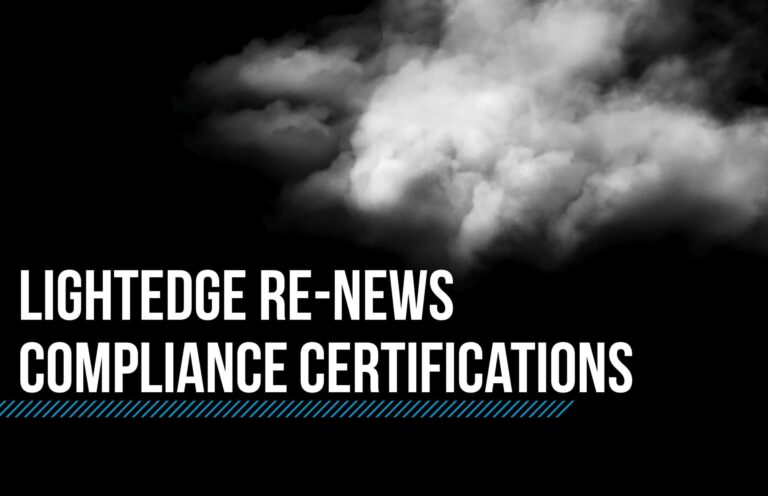Network Security Assessment: Your Guide to a Complete Audit
July 9, 2020

Lightedge
Author

Creating a network security assessment to audit your current security standing is a big undertaking. Knowing where to start can be even tougher. That is why we are here.
The goal of a network security assessment should be to understand the vulnerabilities lurking in your network. From there, companies can take actionable steps to remedy those risks. It is important to audit the security of your network on a regular basis, because malicious actors are always out there seeking ways to harm your organization and clients or expose confidential information.
Another reason companies complete network security assessments may also be due to regulatory requirements. Regulated industries such as healthcare, financial services, or manufacturing and distribution must comply with strict security standards or there could be massive financial, operational, and reputational consequences.
Within this article, we will dive deep into everything that a solid network security assessment should entail. We will discuss key items to cover in your audit, how to go about conducting one internally or through a trusted partner, and some actionable steps you can take once your assessment is complete to improve your security stance right away.
What Should Be Covered in a Network Security Assessment
A network security assessment tests both the vulnerability of a network and the likelihood of a true attack. As Distributed Denial-of-Service (DDoS) attacks are rising in popularity, businesses big and small are becoming victims.
According to Kaspersky’s Average Cost of Enterprise DDoS Attack report, on average, the cost of a DDoS attack for enterprises in 2017 was $2 million, and the cost of for small and medium-sized businesses (SMBs) was $120,000. Costs have only risen since then.
Before your business becomes another statistic, you should create your own network security assessment to identify where you’re at currently and where there’s room to improve. In addition to mitigating future risk, the goal of this audit should be to answer some of the following questions:
- What systems are most at risk of a data breach?
- Where are the vulnerable entry points that hackers could potentially exploit?
- What would the specific impact of a cyberattack to our company look like based on the assets we own?
- What confidential data could be exposed (intellectual property, payment information, personally identifiable information, trade secrets, protected patient health information, etc.) for ourselves and our customers?
- What are steps we can take to secure our network and reduce risk?
One major area that a network security assessment should always encompass is the testing phase. It’s a great place to begin. Start with a test of your network defenses at the top of the exercise. Then, once you have completed your audit and taken steps to securing potential threats, test again. See how your security posture this time around compares to the first. Have you seen an improvement? You should.
Then, implement regular network security testing to ensure new or evolving threats are not able to penetrate your network. That is right, this assessment is not a one and done deal. It requires ongoing attention and vigilance as threats are constantly evolving. You need to be too.
How to Conduct Your Own Network Security Assessment
When conducting your own network security assessment, you will gain insights into your entire security environment. For example, PwC released their Global State of Information Security Survey that reported 30 percent of those surveyed learned that their current employees, including vendors, consultants, and contractors were the source of their security incidents.
Whether your organization strikes a similar conclusion or not, be prepared to gain valuable IT insight that will guide your next steps to patching those vulnerabilities and even in the requirements you set forth for partners you choose to do business with in the future. Here are the steps to conducting your own network security assessment:
- Take inventory of your data.
- Determine the value of your data.
- Assess the vulnerability of your network.
- Put your network security assessment to the test.
A network security assessment is similar to any other cyber risk assessment and starts in the same fashion.
#1. Take Inventory of Your Data
Taking inventory of data and resources is a broad step. Specifically, what you should document is your top assets. This allows you to prioritize which data to assess first. Depending on your time requirements and budget, you may not need to perform an assessment on every wireless network, application, and wi-fi access point.
While your inventory may not include every minor detail, it never hurts to document all of your networks, cloud systems, devices, data, and other resources to determine which assets you must secure. During this step, record where your sensitive data lives to help determine which systems are most critical to protect.
Keep in mind that human error and internal threats are top causes of security breaches. In fact, Kroll reported that human error was the cause of approximately 90 percent of data breaches received by the Information Commissioner’s Office (ICO) between 2017 and 2018.
Ensure that your team conducting this audit understands the goals and their responsibilities. Keep lines of communication open at every step to remove the chance for miscommunication.
#2 Determine Data Value
During this phase of your network security assessment, you will develop data classification criteria that will help to determine the value of an asset or data set. This classification criteria can be based on legal standing, business importance, and asset value. Here are some questions to help your team determine data value:
- Would this information benefit a competitor? (think trade secrets or intellectual property)
- Would our organization be fined or penalized in anyway if this information was breached? (payment information, patient health information, etc.)
- Would our organization face reputational damage or loss profit if this information was exposed?
If the answer is yes to any of the questions above, then the data is extremely valuable and should be secured at all costs.
Like we said earlier, most organizations do not have an unlimited budget and internal staff to spare, so it is important to understand where your business-critical assets reside. That way, you can limit the scope of your assessment. If certain data does not meet your classification criteria, then consider moving your time and resources elsewhere.
If your industry is held to strict regulatory compliance standards, make this a priority. Avoid fines or other consequences and review assets that are required to be assessed and remain secure.
#3 Assess the Vulnerability of your Network
Anything that can be exploited in an otherwise secure network are the type of vulnerabilities that you should be looking for. Thanks to vulnerability scans, you can identify security weaknesses quickly.
These scans will help show what malicious hackers are seeing. Hackers map a network by scanning the systems to locate possible vulnerabilities or entry points to unauthorized systems. Hackers are not the only thing that cause breaches, however.
Unfortunately, internal threats make up a majority of security incidents. Whether intentional or not, network risk oftentimes come from within your organization. Other risks to note include third-party vendors who have access to your network and demonstrate poor security habits. A good rule of thumb is to only partner with vendors that take your security and compliance as seriously as you do. Do not compromise on the certifications and processes these third parties should hold.
Depending on the vulnerabilities your organization is looking to access, there are a couple of different scanning processes, which include:
- Network Scanning: This is the most common type of scan. It includes a look at networks, communication channels, entry points, wi-fi, IoT devices, and any other equipment accessing the network. This type of scan can detect and classify vulnerabilities it finds.
- Application Scanning: If your organization is not conducting an application penetration test where a simulated attack reveals the effectiveness of application security, then application scanning is needed.
- Internal Scanning: Some organizations will outsource this scan to a security consultant. The consultant will test internal personnel and the level of internal risk. Depending on the results, companywide training may be recommended to help educate and prevent future risks.
These scans can be time intensive, and require expert knowledge and a healthy budget. If you are lacking any of these, then outsourcing this to a trusted IT partner is highly recommended. It will not only allow your internal resources to keep focus on corporate initiatives and their areas of expertise, but also ensure you’re entrusting your network security to experts who are constantly on top of evolving threats, vulnerabilities, and trends. Let them do the homework and hands-on tasks for you, so there’s zero room for error or doubt.
#4 Put your Network Security Assessment to the Test
You have taken stock of your data and resources, prioritized your assets based on value, and taken a scan of your entire network. Now it is time for another round of testing. The goal of this testing is to see if your improved security controls and risk mitigation techniques are effective in preventing cyber criminals from attacking.
Authorized simulated attacks on your network help to identify any lasting vulnerabilities or threats and helps to strengthen your existing IT systems. This simulated attack is often called a network penetration test or a pen test.
Similar to your network assessment, the pen test aims to identify vulnerabilities. Where they differ is in this testing. With a pen test, you will gain insight into your network baselines, security posture and controls, preventing future breaches and learning how to ensure network security.
This in-depth testing offers actionable steps that your organization can take. Once your testing is complete, reviewing your assessment report will help create a roadmap to make your business safer.
Continue to test your network regularly. New dangers are arising or evolving every day and looking to exploit your business.
Lightedge’s Network is Above All the Rest
When asked about our differentiators, the first answer is always – our network. Lightedge designs all of our purpose-built facilities and services around connectivity first. That means unparalleled scale, redundancy, speed, and uptime for your business and the clients you serve.
We spent over two decades perfecting our network and infrastructure to be the most scalable, redundant, and secure in the US. Today, Lightedge has narrowed our focus to supporting the most highly regulated organizations with our Tier III data centers and compliant cloud offerings. Although, one thing has stayed constant – everything we do is built around our unrivaled network.
We understand your top priorities when it comes to connectivity:
- Your applications are always up.
- Your applications are always fast for end users.
Have confidence that Lightedge has built every inch of our network to deliver you just that.
DDoS attacks are continuing to grow in frequency and complexity. As the leader in connectivity, Lightedge takes a proactive stance to deliver the top network safeguards every organization should have. Our internet is inherently built to handle mission-critical, compliant workloads. On top of that includes security. We offer two tiers of DDoS Protection to upgrade your Lightedge Internet experience and protect against the rest.
With DDoS Protection, it’s recommended to have these safeguarding measures in place prior to an attack ever taking place so that we’re able to mitigate the situation right away. Interested in staying ahead of DDoS threats? Let’s Get You Setup.
We do understand that it may be too late in some instances and you may already be in emergency, reactive mode. If your company is currently under attack, Lightedge can step in to assist and work with you to figure out a solution. If you’re concerned or experiencing issues, contact us here immediately at 1.877.771.3343!
Related Posts:
- Antivirus: Not Just By Prescription Anymore
- DDoS Attacks: Your Guide to Staying Protected
- Orchestrating Network Security Policies to Prevent a Data Breach
- Top Network Security Threats and How to Prevent Them
- Three Solutions to Protect Against Insider Threats
- Backups and Redundancy: Why Your Business Needs Both
- How to Mitigate and Respond to Data Breaches
- Proven Security Techniques for Data Protection in the Cloud
- Security for Remote Workers: A COVID-19 Crisis Planning Guide
- What is Edge Computing and How Does it Impact Me?


